
Using ABA to improve attention to task
Harnessing ABA Strategies to Boost Focus and Engagement
Enhancing Attention in Children with Autism through Applied Behavior Analysis
Applying ABA techniques in educational and therapeutic settings offers powerful avenues to improve attention, focus, and task engagement among children with autism. Through specific interventions like task analysis, reinforcement strategies, and sensory integration, caregivers and educators can foster greater independence, reduce distractibility, and promote meaningful learning experiences.
The Science Behind ABA and Attention
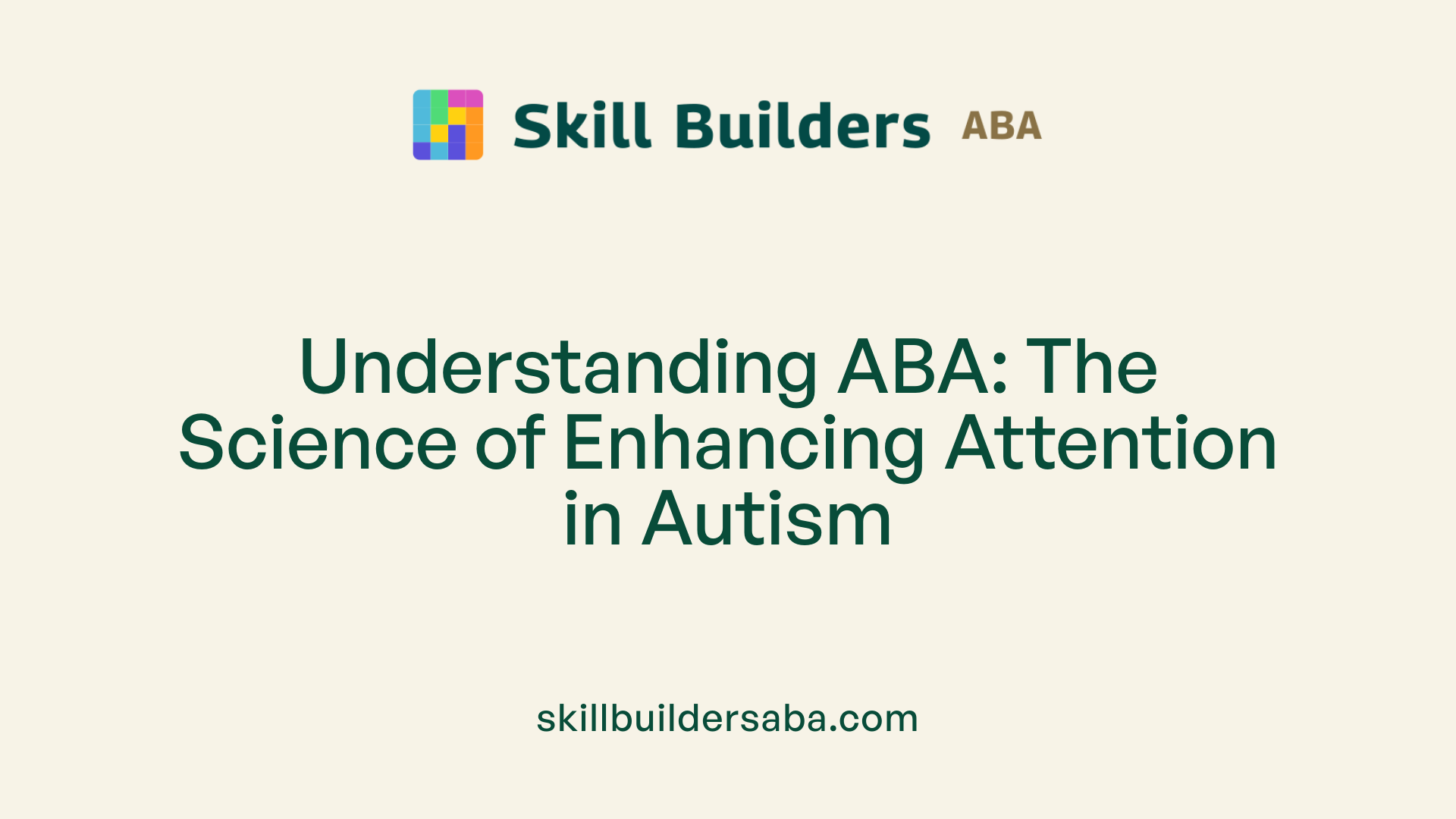
What is ABA and how does it improve attention?
Applied Behavior Analysis (ABA) is a scientifically validated approach that aims to modify behaviors using reinforcement and systematic teaching strategies. In the context of increasing attention in children with autism, ABA employs techniques such as rewarding focus, breaking complex tasks into smaller, manageable steps, and data-driven adjustments to interventions. Activities like matching games, sorting objects, listening tasks, and sensory-friendly environments are integrated into ABA programs to enhance concentration.
ABA emphasizes reinforcing attentive behaviors and reducing distractions, which helps children develop longer attention spans. Consistent routines and engaging activities, such as storytime and arts and crafts, are used to create predictable structures that encourage focus and independence.
How is ABA grounded in learning theory?
ABA is firmly rooted in learning theories, especially operant conditioning, which states that behaviors can be increased or decreased based on consequences—rewards or penalties. This scientific foundation allows practitioners to design interventions that effectively promote desirable behaviors like sustained attention.
Techniques such as task analysis—breaking down activities into simple steps—and chaining methods—linking these steps into sequences—are based on these principles. Forward chaining teaches starting from the first step, reinforcing initial success, whereas backward chaining begins from the last step, ensuring completion. These methods facilitate skill transfer to everyday life, fostering independence.
Overall, ABA’s scientific basis ensures that interventions are effective, individualized, and adaptable. It encourages consistent use of routines, sensory strategies, and shared activities that contribute to improved attention and behavioral development.
| Technique | Description | Practical Example |
|---|---|---|
| Reinforcement | Reward for focused behavior | Praising a child for maintaining eye contact during a task |
| Task Analysis | Breaking down complex tasks into smaller steps | Teaching dressing by dividing into buttoning, zippering, etc. |
| Chaining | Connecting steps into an order, starting with forward or backward | Teaching tooth brushing starting from applying toothpaste (forward chaining) |
| Sensory Integration | Using tools like weighted blankets to regulate sensory responses | Using a weighted vest to help calm a sensory-sensitive child |
By combining these methods, ABA programs support children with autism in developing better attention, communication, and daily living skills, deeply rooted in scientific learning principles.
Implementing Task Analysis to Elevate Focus
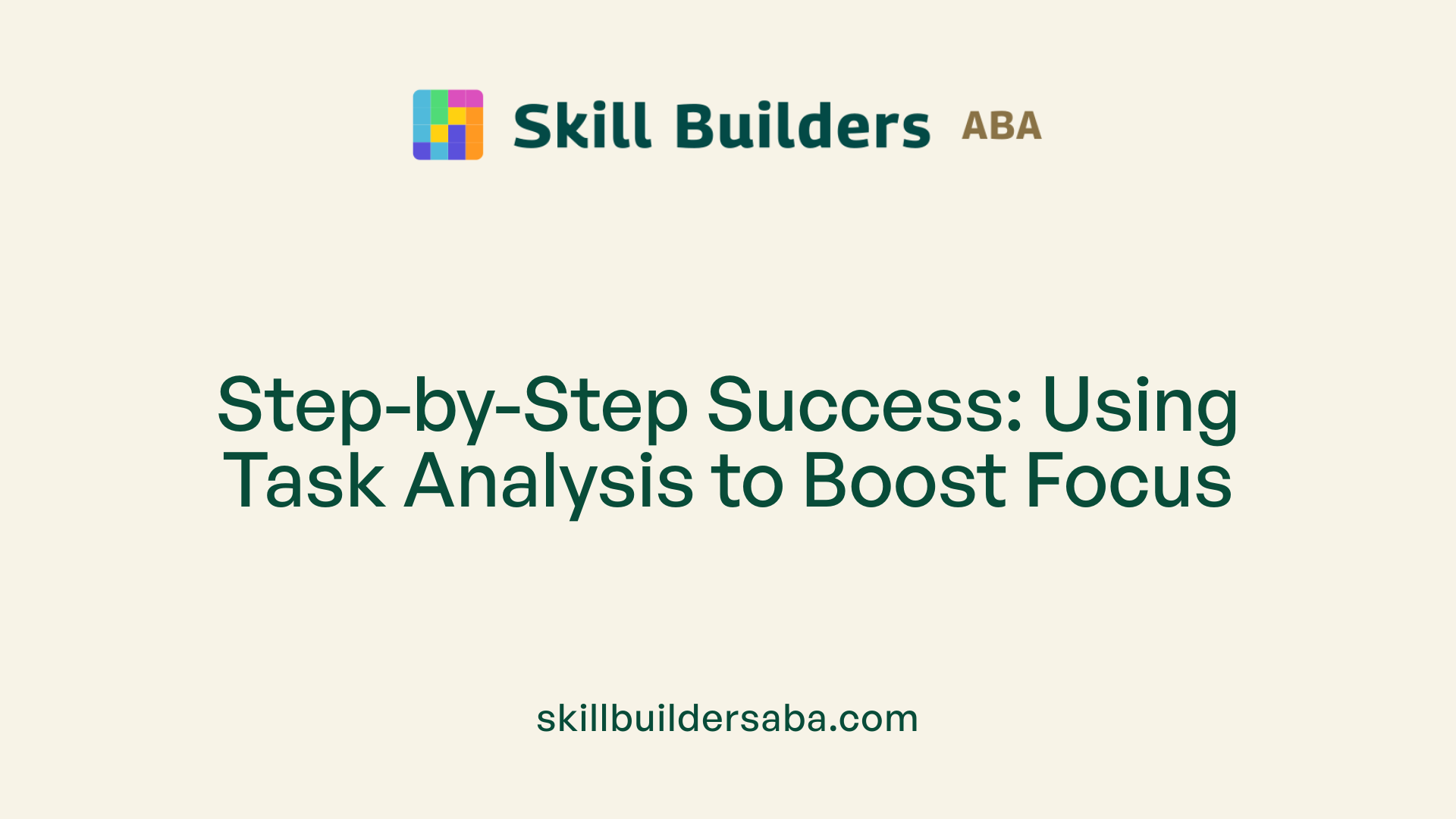
How can ABA be applied in educational settings to improve students' attention to tasks?
Applied Behavior Analysis (ABA) offers practical strategies to help children with autism improve their focus and attention during learning activities. One of the core techniques is task analysis, which involves breaking down complex activities into smaller, more manageable steps.
By dividing a task like brushing teeth or dressing into discrete steps, teachers can make the process less overwhelming and easier to follow. This structured approach helps children understand what is expected at each stage, allowing for clearer expectations and smoother learning.
In addition to task analysis, consistent routines are essential. When children know what to expect, they are less likely to become distracted or anxious. Visual supports such as schedules, checklists, and cue cards reinforce these routines, providing visual prompts that guide children through each activity.
Reinforcement strategies, including praise, tokens, or other rewards, are used to encourage attentive behaviors. For example, praising a child for maintaining focus during a task or giving a token after completing each step can motivate ongoing engagement.
Prompting and fading techniques further support focus development. Prompting provides cues or assistance when a child hesitates, and gradually, these prompts are faded as the child gains independence, building confidence in self-directed attention.
Creating a calm, distraction-free learning environment also plays a significant role. Reducing clutter, controlling noise, and establishing dedicated spaces for learning minimize sensory overload, thereby increasing the child's ability to concentrate.
Physical breaks and sensory activities integrated into the routine can help reset attention spans. For instance, short movement breaks between tasks or sensory activities like squeezing fidget toys can improve focus.
In summary, ABA-based approaches in the classroom, combining task analysis with reinforcement, visual supports, structured routines, and environmental management, effectively enhances students' ability to sustain attention and participate actively in learning.
Techniques to Boost On-Task Behavior
In ABA therapy for children with autism, techniques like task analysis and chaining are fundamental in enhancing attention and maintaining on-task behavior. Task analysis involves breaking down complex activities into small, manageable steps. This method reduces feelings of overwhelm and provides a clear, logical pathway for learning new skills such as dressing, brushing teeth, or preparing a snack.
Chaining, specifically, includes forward and backward methods. Forward chaining begins teaching from the first step, gradually adding subsequent steps, while backward chaining starts from the last step and works backward. These sequential approaches reinforce the entire skill, making it easier for children to complete tasks independently.
Visual supports and prompts are often incorporated to promote understanding and independence. Picture cards, visual schedules, and step-by-step guides help children follow along and recognize what is expected. Consistent use of these supports encourages active participation and reduces frustration, contributing to sustained focus.
Data collection plays a crucial role in tailoring interventions. Regular tracking of a child's progress enables practitioners to adjust strategies to fit individual needs. Personalizing the approach ensures that each child receives the appropriate level of challenge and support, fostering greater motivation and attention.
Combining task analysis, chaining, visual supports, and vigilant data monitoring creates a structured environment conducive to learning. These techniques promote confidence, independence, and the ability to stay attentive during activities, ultimately reducing stress and improving overall engagement.
| Technique | Description | How It Supports Attention |
|---|---|---|
| Forward Chaining | Teaching steps from the first to the last | Builds confidence gradually, establishing a routine |
| Backward Chaining | Starting from the last step and working backward | Ensures successful task completion, boosting motivation |
| Visual Supports | Use of pictures, schedules, and prompts | Clarifies steps, encourages independence |
| Data Collection | Monitoring progress regularly | Allows for individual adjustments and targeted support |
By integrating these methods, ABA practitioners can significantly improve focus and on-task behavior, leading to greater success in skill acquisition and everyday functioning.
Enhancing Attention Span and Engagement in Children with Autism
What methods are effective for increasing attention span and engagement in children with autism?
Increasing attention and active engagement in children with autism involves a combination of evidence-based strategies tailored to individual needs. One fundamental approach is the use of reinforcement techniques. Positive reinforcement, such as praise or rewards, encourages children to focus and complete tasks.
In addition, multisensory activities can significantly boost engagement. These include sensory play with toys like building blocks, arts and crafts, listening tasks, and physical activities like obstacle courses. Sensory integration strategies that incorporate tools like weighted blankets and fidget toys help address sensory sensitivities, enabling children to focus better.
Visual supports are also invaluable. Visual schedules, social stories, and cues help children understand what is expected, reducing anxiety and distractibility. Structured routines anchored in these visual aids foster predictability and comfort, supporting sustained attention.
Systematic teaching methods such as task analysis break down complex activities into smaller, manageable steps, making learning easier. Techniques like chaining—both forward and backward—help in teaching daily living skills, from brushing teeth to dressing, by connecting each step into a seamless sequence.
Furthermore, interventions aimed at developing joint attention—sharing eye contact and interests—are critical for engagement. Play activities based on a child's preferences promote shared attention, language development, and enjoyment.
Incorporating physical movement through regular exercise, sensory breaks, and outdoor activities helps maintain alertness and focus. Research from Haifa University highlights that addressing sensory processing challenges, which affect up to 96% of children with autism, is crucial for improving attention.
Overall, a multifaceted approach combining reinforcement, multisensory engagement, visual supports, structured routines, and sensory-friendly environments creates a conducive setting for children with autism to develop better attention span and participate actively in learning and daily activities.
ABA Strategies to Cultivate Focus and Attention
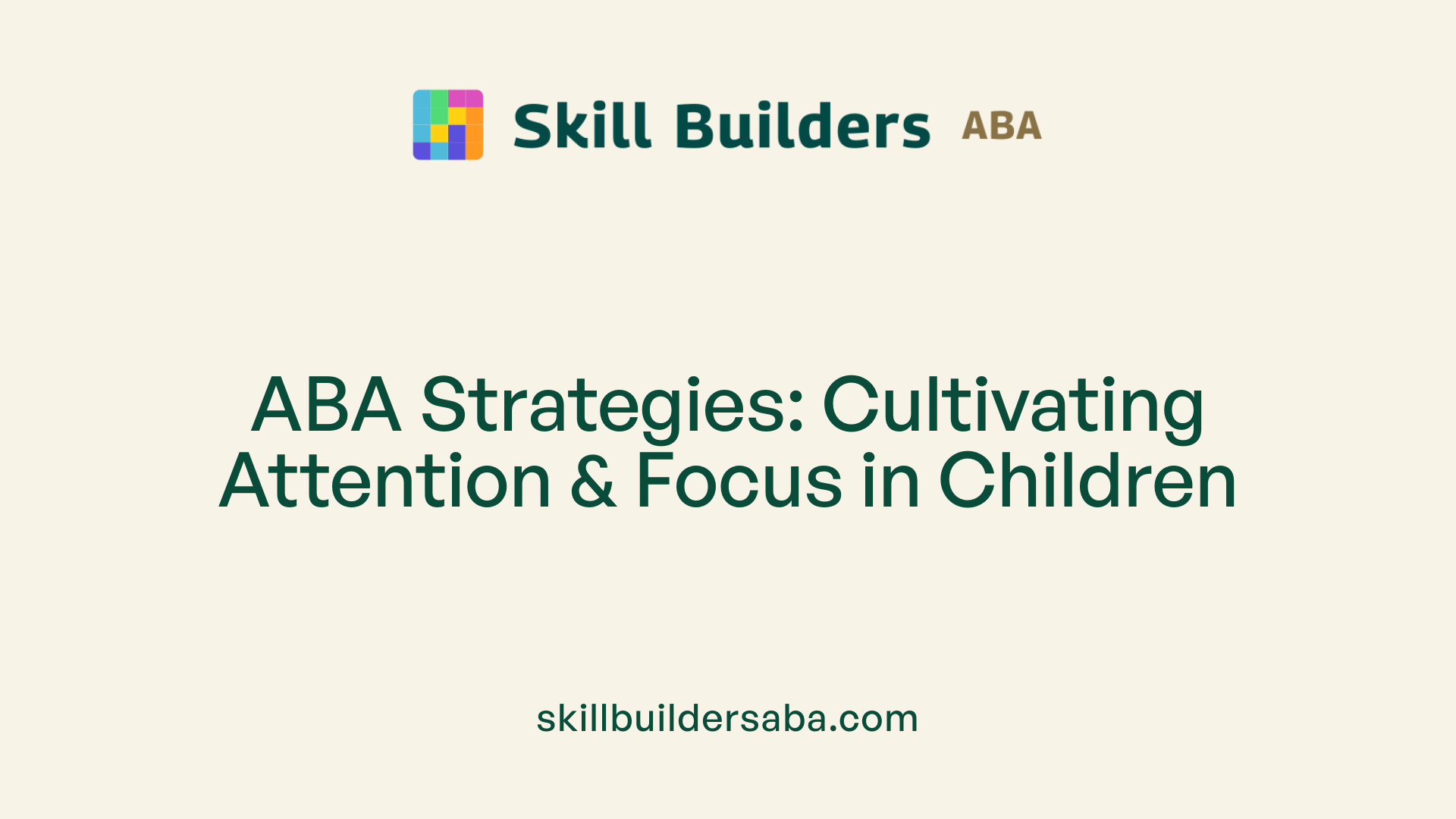
What strategies and interventions using ABA can be employed to improve attention to tasks?
Applied Behavior Analysis (ABA) offers several effective approaches to boost attention in children with autism. Central to these strategies is the use of task analysis, which involves breaking complex activities into smaller, manageable steps. This simplification helps children understand each part of an activity, making it easier to focus and learn.
Visual supports like schedules, checklists, and step-by-step instructions serve as visual cues to guide children through activities. These tools reduce confusion and help children anticipate what comes next, fostering better engagement with tasks.
Reinforcement plays a vital role in enhancing focus. When children successfully attend to a task, they can receive rewards such as praise, tokens, or preferred activities. This positive feedback encourages continued attention and desired behaviors.
Incorporating joint attention activities is also effective. Games that involve sharing attention, like following pointing gestures or turn-taking activities, build social-communication skills that underpin sustained focus.
Establishing structured routines and clear expectations minimizes anxiety and uncertainty. Regular practice in predictable environments helps children internalize attention skills over time.
Finally, calming techniques such as deep breathing or sensory activities, including the use of fidget toys or weighted blankets, improve self-regulation. When children are better able to self-soothe, their capacity to focus during tasks is significantly enhanced.
Summary table of ABA strategies for attention improvement:
| Strategy | Description | Example Activities |
|---|---|---|
| Task analysis | Break complex tasks into simple steps | Tooth brushing, dressing, meal prep |
| Visual supports | Use cues like schedules and checklists | Visual schedules for daily routines |
| Reinforcement techniques | Reward focus and achievement | Praise, tokens, preferred activities |
| Joint attention activities | Promote shared attention and social engagement | Sharing toys, pointing games |
| Routine establishment | Create predictable environments for familiarization | Consistent daily schedules |
| Sensory and calming aids | Use sensory tools to improve self-regulation | Fidget toys, weighted blankets, sensory breaks |
By combining these evidence-based ABA strategies, caregivers and therapists can significantly enhance attention spans in children with autism, paving the way for improved learning and development.
Sensory Strategies and Environmental Adaptations
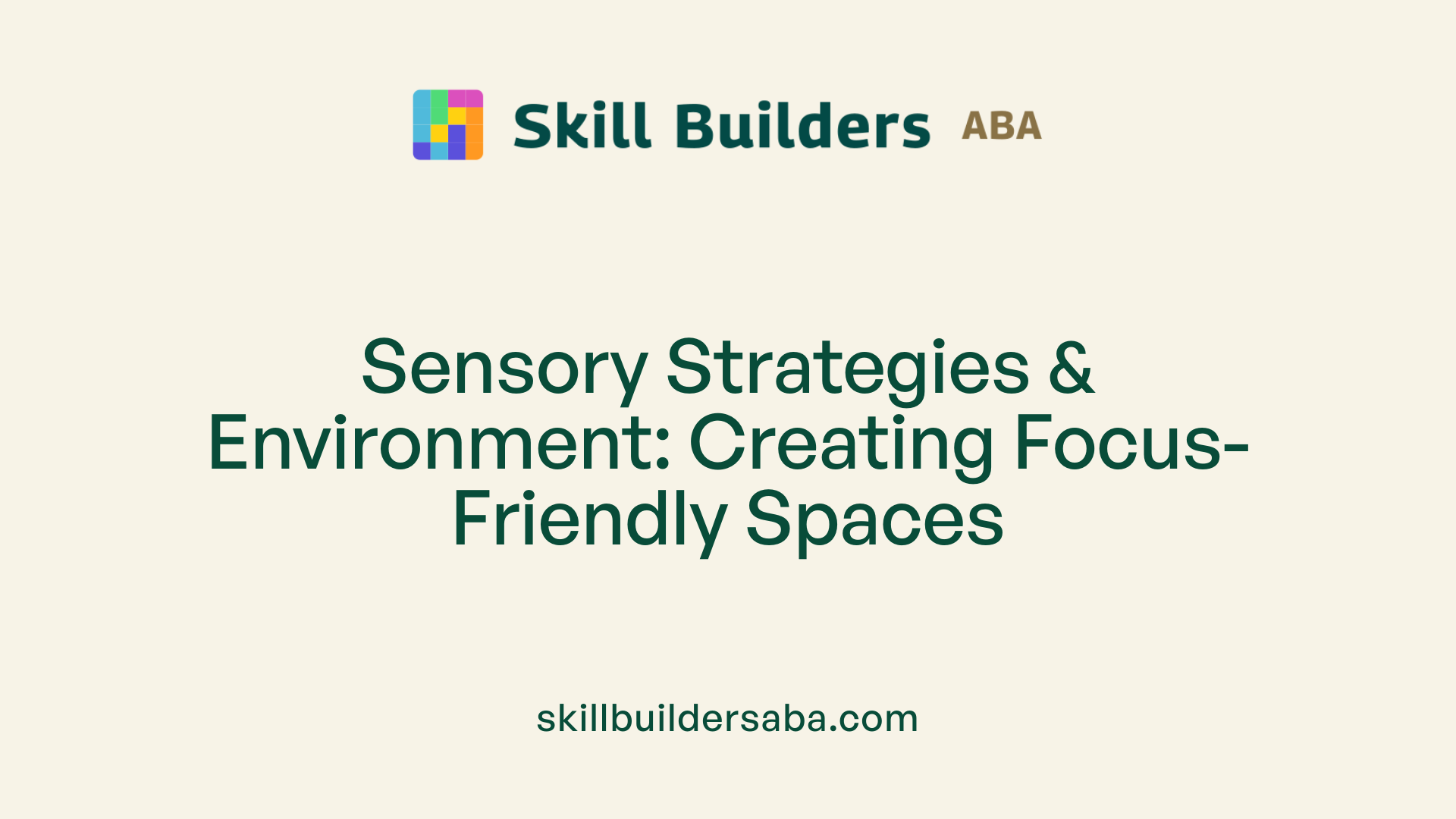
How can sensory integration strategies be used to improve attention?
Sensory integration strategies are essential for helping children with autism manage sensory sensitivities that can interfere with focus. These techniques involve creating an environment that minimizes discomfort and overstimulation, allowing children to concentrate better on learning activities.
One effective approach is the use of tools such as weighted blankets, fidget toys, and sensory bins. Weighted blankets provide deep touch pressure, which can be calming and help regulate sensory responses. Fidget toys offer tactile stimulation and keep restless hands occupied, reducing distractions caused by sensory-seeking behaviors.
Creating a sensory-friendly environment is equally important. This involves reducing clutter, adjusting lighting to be soft or natural, and minimizing background noise. Such modifications prevent sensory overload and make it easier for children to maintain attention.
In addition to environmental adjustments, incorporating regular sensory breaks is beneficial. Activities like deep breathing exercises or short, calming movement breaks help children self-regulate, decreasing anxiety and overstimulation.
Research from Haifa University states that a significant percentage—between 70 to 96 percent—of children with autism face sensory processing challenges. Tailoring interventions to address these sensitivities not only improves attention but also fosters a more positive learning experience.
Overall, integrating sensory strategies and creating a calming environment are crucial steps in supporting children with autism to develop better focus, independence, and confidence in daily activities.
Creating Calming Environments to Support Focus
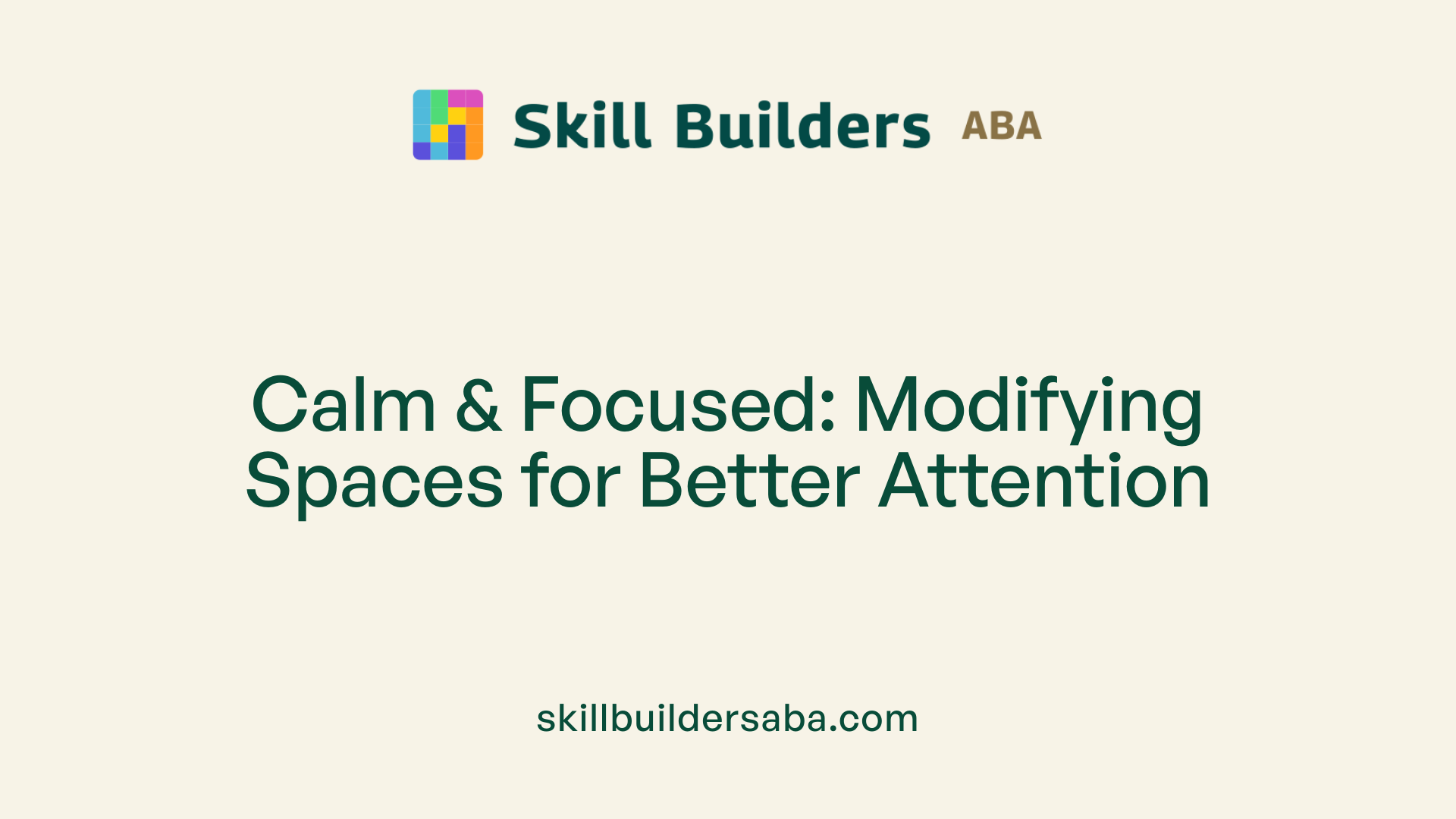
What environmental modifications can aid in improving attention for children with autism?
One of the most effective ways to support children with autism in developing better attention spans is by creating an environment that minimizes distractions and meets their sensory needs. A calm, quiet, and clutter-free workspace can significantly enhance focus and engagement. This involves organizing the physical space to reduce visual clutter, removing unnecessary items that may divert attention.
In addition to organizing the physical space, incorporating movement and physical activity is crucial. Regular exercise breaks, sensory breaks, and outdoor activities can help children regulate their sensory systems and improve their ability to concentrate on tasks. These activities serve as a way to release excess energy and soothe sensory sensitivities, which are common in children with autism.
Reducing environmental triggers such as loud noises, bright or flashing lights, and overwhelming stimuli is also important. Using soft lighting, noise-canceling headphones, or creating designated quiet zones can help children stay focused. Tailoring the environment to each child's specific sensory preferences ensures that they are more comfortable and better equipped to maintain attention during learning activities.
Through thoughtful modifications to their surroundings, children with autism can experience less stress and distraction, paving the way for improved concentration, participation, and learning outcomes.
The Role of Routine and Consistency in Attention Development
How do routines influence attention in children with autism?
Structured routines play a crucial role in enhancing attention skills among children with autism. By providing a predictable environment, routines reduce feelings of uncertainty and anxiety, which often distract children from focusing on tasks. When children know what to expect next, they feel more secure and are more willing to engage with activities.
Consistent routines foster familiarity, making it easier for children to transition between activities without becoming overwhelmed. This predictability encourages children to participate actively and stay engaged for longer periods.
Moreover, regularly scheduled activities help children to develop a sense of time passing and prepare them for upcoming tasks. As routines become part of daily life, children learn to anticipate steps involved in various activities, strengthening their attention span and independence.
Benefits of predictable schedules
Predictable schedules support children with autism by establishing a stable environment that promotes focus. When children understand the pattern of their day, they experience reduced stress and fewer behavioral challenges related to surprise or change.
Having a routine also allows caregivers and teachers to systematically reinforce attention skills through repetition and consistency. This not only improves immediate focus but also helps in generalizing attention abilities across different settings.
How consistency supports attention skills
Consistency in applying routines contributes significantly to sustained attention development. When routines are applied uniformly, children begin to internalize expectations and mastering these steps becomes automatic.
Furthermore, routine consistency encourages the development of self-regulation, as children learn to manage their reactions and engage with tasks in a structured manner.
Overall, maintaining steady routines and schedules provides a foundation for children with autism to build better attention skills, fostering greater independence and confidence in everyday activities.
Bringing It All Together: Effective Strategies for Enhancing Attention with ABA
Implementing ABA strategies such as task analysis, reinforcement, sensory integration, and structured routines creates a comprehensive framework to boost attention and engagement in children with autism. Tailoring interventions to individual needs and maintaining consistency results in meaningful improvements in focus, learning, and independence, ultimately fostering greater success in educational and daily life activities.
References
- Improving Attention Span in Autism Through School Readiness ...
- Task Analysis in ABA Therapy: Strategies and Examples
- The Power of Task Analysis in ABA Therapy
- Effective Strategies for Autism & Attention Span Improvement
- Improving Attention Span in Autism Through School Readiness ...
- How to Teach A Child Joint Attention with ABA
- 10 Effective Tips to Help Focus with Autism - Astra ABA
- Attention in Children With Autism Spectrum Disorder and the Effects ...
Reach Out Today
Learn more about how we can support your child’s growth and development. Contact us to discuss our services and availability in your area.
.svg)